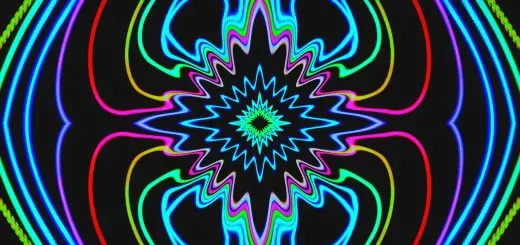Cupping Chronicles: Ancient Wisdom in Alternative Health Practices

Looking for more amazing products? Check out our online store and explore our collection here! Happy shopping!
Before diving in, please note: This post is for informational purposes only. If you’d like to know more about how we approach topics, feel free to check out our friendly Disclaimer Page.
Hey there, amazing readers! 
We’re committed to delivering quality posts, and your support (even just sticking around despite the ads) means everything to us. So, bear with us, and thanks for helping us keep the good vibes rolling. Now, on to the fun stuff!
TRANSLATE BUTTON AT THE END OF THE ARTICLE
Cupping Chronicles: Ancient Wisdom in Alternative Health Practices
Overview
Cupping therapy is an ancient healing practice that has been used for centuries in various cultures around the world.
This alternative health technique involves placing cups on the skin to create suction, which is believed to promote healing and improve overall well-being.
In recent years, cupping therapy has gained popularity as a holistic approach to addressing various health issues.
In this article, we will delve into the world of cupping, exploring its history, benefits, techniques, potential risks, scientific evidence, and how to integrate it into your wellness routine.
What is Cupping?
Cupping is a form of alternative therapy that involves placing specially designed cups on the skin to create a suction effect.
The cups can be made of various materials such as glass, bamboo, or silicone.
Traditionally, the cups were heated using fire to create a vacuum, but modern cupping techniques may utilize mechanical suction devices.
The suction created by the cups pulls the skin and underlying tissues upward, which is believed to stimulate blood flow, relax muscles, and promote the flow of vital energy, known as Qi.
History of Cupping Therapy
Cupping therapy has a rich history dating back thousands of years.
It has been practiced in ancient Egyptian, Chinese, and Middle Eastern cultures.
The earliest recorded evidence of cupping dates back to around 1550 BC in Egypt.
In traditional Chinese medicine, cupping was used to balance the flow of Qi and treat various ailments.
Over time, cupping spread to other regions, including Europe and the Americas.
Despite its long history, cupping therapy has faced periods of skepticism and suppression but has persevered as an alternative health practice.
How Does Cupping Work?
Cupping therapy is believed to work by creating a suction force that draws blood to the surface of the skin and stimulates the flow of Qi.
The cups create a partial vacuum, which lifts the skin and underlying tissues.
This negative pressure is thought to increase blood circulation, reduce inflammation, and promote the release of toxins from the body.
The suction effect also stretches and relaxes the muscles and connective tissues, providing relief from muscle tension and promoting overall relaxation.
Benefits of Cupping Therapy
Cupping therapy offers a range of potential benefits for both physical and mental well-being.
Some of the commonly reported benefits include:
Pain relief: Cupping has been used to alleviate musculoskeletal pain, such as backaches, neck pain, and joint pain.
The increased blood flow and release of endorphins during cupping may contribute to pain reduction.
Relaxation and stress reduction: Cupping can provide a deep sense of relaxation and help alleviate stress and anxiety.
The therapy promotes the release of tension in muscles and promotes a general feeling of well-being.
Improved circulation: By stimulating blood flow, cupping can improve overall circulation in the body.
This can have a positive impact on various health conditions, from promoting wound healing to reducing inflammation.
Detoxification: Cupping is thought to help remove toxins and waste products from the body.
Discover "SUPERFOODS: The Key to Health and Balance
"
The suction created by the cups is believed to draw out impurities from the tissues and stimulate the lymphatic system, aiding in detoxification.
Enhanced athletic performance: Some athletes incorporate cupping therapy into their training routines to improve performance and aid in muscle recovery.
Cupping is believed to help reduce muscle soreness, promote healing, and increase flexibility.
Different Types of Cupping Techniques
There are several cupping techniques used in therapy:
Dry cupping: This is the most common type of cupping.
The therapist places cups on the skin and creates a vacuum by suctioning the air out of the cups.
The cups are then left in place for a few minutes, creating a suction effect.
Wet cupping: In wet cupping, the therapist makes small incisions on the skin before applying the cups.
As the suction is created, a small amount of blood is drawn out.
This technique is believed to help remove toxins from the body.
Fire cupping: This traditional method involves briefly heating the inside of the cup with fire before placing it on the skin.
As the air inside the cup cools, it creates a vacuum effect.
Fire cupping is less commonly used today due to the risk of burns and the availability of safer alternatives.
Moving cupping: During moving cupping, the therapist applies oil or lotion to the skin before placing the cups.
The cups are then moved along specific areas of the body, creating a massage-like effect.
Cupping vs. Other Alternative Therapies
While cupping therapy shares similarities with other alternative therapies, such as acupuncture and massage, it has its unique characteristics.
Here are some key differences between cupping and other practices:
Acupuncture: While acupuncture also stimulates the flow of Qi, it involves the insertion of thin needles into specific points on the body.
Cupping, on the other hand, creates suction to promote healing.
Both therapies can be used in conjunction to address different health concerns.
Massage therapy: Massage focuses on manipulating the body’s soft tissues to relieve tension and promote relaxation.
Cupping, on the other hand, utilizes suction to lift tissues and increase blood flow.
It can be used as a complementary therapy to massage or as a standalone treatment.
Chiropractic care: Chiropractic care primarily involves spinal adjustments and manual manipulations to address musculoskeletal issues.
Cupping, however, focuses on creating suction to release muscle tension and promote blood flow.
In some cases, chiropractors may incorporate cupping into their treatment plans.
Discover "Sports Nutrition: The Importance of Nutrition and Exercise for Overall Health
"

Potential Risks and Side Effects of Cupping
While cupping therapy is generally considered safe, there are some potential risks and side effects to be aware of:
Bruising and skin discoloration: The suction created by the cups can cause temporary bruising or discoloration of the skin.
These marks usually fade within a few days or weeks.
Skin burns: Fire cupping carries the risk of burns if the cups are not handled properly.
It is important to ensure that the cups are not excessively heated and that the skin is protected during the procedure.
Skin irritation: Some individuals may experience mild skin irritation or sensitivity after cupping.
This can manifest as redness, itching, or swelling.
If these symptoms persist or worsen, it is advisable to consult a healthcare professional.
Dizziness and lightheadedness: During cupping, some people may experience temporary dizziness or lightheadedness due to changes in blood circulation.
It is recommended to rest and avoid sudden movements after a cupping session.
Finding a Qualified Cupping Practitioner
When seeking cupping therapy, it is important to find a qualified and experienced practitioner.
Here are some tips to help you find a reliable cupping practitioner:
Research and referrals: Seek recommendations from trusted sources, such as friends, family, or healthcare professionals.
Additionally, do some research on local practitioners, checking their qualifications, experience, and any reviews or testimonials available.
Credentials and training: Look for practitioners who have undergone formal training and certification in cupping therapy.
They should have the necessary credentials and be able to provide evidence of their qualifications.
Clean and hygienic environment: Ensure that the cupping facility follows proper hygiene practices.
The cups used should be sterilized or disposable to prevent the risk of infection.
Communication and comfort: Choose a practitioner who listens to your concerns, answers your questions, and makes you feel comfortable.
A good practitioner should explain the procedure, potential risks, and benefits before starting treatment.
What to Expect During a Cupping Session
During a cupping session, you can expect the following:
Consultation: The practitioner will discuss your medical history, concerns, and goals for cupping therapy.
This allows them to tailor the treatment to your specific needs.
Preparation: The area to be treated will be cleaned and, if necessary, lubricated with oil or lotion.
This helps create a seal for the cups and allows them to move smoothly on the skin.
Cup placement: The cups will be carefully placed on the skin and suction will be created either by a mechanical device or by using a flame to remove the air.
Cupping duration: The cups are typically left in place for about 5 to 15 minutes.
However, the time may vary depending on the practitioner’s assessment and the technique used.
Sensations: During the treatment, you may feel a tight or pulling sensation as the cups create suction.
This is generally not painful but can be intense, especially if multiple cups are used.
Cup removal: To remove the cups, the practitioner will release the suction either by using a valve or by breaking the seal with a small needle.
This is a quick and relatively painless process.
Aftercare: After the session, the practitioner may provide advice on post-treatment care, including avoiding excessive heat, staying hydrated, and gentle stretching exercises.
Scientific Evidence and Research on Cupping
While cupping therapy has been practiced for centuries, scientific research on its effectiveness is still limited.
Most studies conducted to date have been small-scale and more research is needed to establish definitive conclusions.
However, some studies have shown positive results:
A 2015 review published in the Journal of Traditional and Complementary Medicine found that cupping therapy was effective in relieving musculoskeletal pain, particularly in the neck and back.
Another systematic review in 2016, published in the Journal of Acupuncture and Meridian Studies, concluded that cupping had a positive effect on reducing pain and inflammation.
A 2019 study in the Journal of Alternative and Complementary Medicine investigated the effects of cupping on chronic neck pain.
The researchers reported significant improvements in pain intensity and quality of life among participants.
While these studies show promising results, it is important to note that more rigorous research is needed to validate the effectiveness of cupping therapy and to understand the underlying mechanisms of action.
Integrating Cupping Therapy into Your Wellness Routine
If you are considering integrating cupping therapy into your wellness routine, here are some tips to get started:
Consult a healthcare professional: Before trying cupping or any alternative therapy, it is always advisable to consult with a healthcare professional, especially if you have any underlying health conditions.
Find a qualified practitioner: As mentioned earlier, seek out a qualified cupping practitioner who can provide safe and effective treatments.
They can guide you on the best approach for your specific needs.
Start slowly: Begin with shorter cupping sessions to allow your body to adapt to the therapy.
Gradually increase the duration or intensity of the sessions based on your comfort level.
Combine with other approaches: Cupping can complement other wellness practices such as acupuncture, massage, or yoga.
Consider integrating cupping therapy into your existing routine for a holistic approach to well-being.
Listen to your body: Pay attention to how your body responds to cupping therapy.
If you experience any discomfort or adverse effects, communicate with your practitioner and consider adjusting the treatment accordingly.
Conclusion
Cupping therapy offers a unique approach to alternative health practices, harnessing the ancient wisdom of various cultures.
While its effectiveness is supported by anecdotal evidence and some scientific research, more studies are needed to establish its full potential.
If you are interested in trying cupping therapy, consult a qualified practitioner, discuss your goals and concerns, and ensure that the treatment is tailored to your specific needs.
Remember to always prioritize your safety and well-being, and consult a healthcare professional before starting any new wellness practice.

The Enlightenment Journey is a remarkable collection of writings authored by a distinguished group of experts in the fields of spirituality, new age, and esoteric knowledge.
This anthology features a diverse assembly of well-experienced authors who bring their profound insights and credible perspectives to the forefront.
Each contributor possesses a wealth of knowledge and wisdom, making them authorities in their respective domains.
Together, they offer readers a transformative journey into the realms of spiritual growth, self-discovery, and esoteric enlightenment.
The Enlightenment Journey is a testament to the collective expertise of these luminaries, providing readers with a rich tapestry of ideas and information to illuminate their spiritual path.
Our Diverse Expertise
While our primary focus is on spirituality and esotericism, we are equally passionate about exploring a wide range of other topics and niches 

To ensure we provide the most accurate and valuable insights, we collaborate with trusted experts in their respective domains 
Our blog originally focused on spirituality and metaphysics, but we’ve since expanded to cover a wide range of niches. Don’t worry—we continue to publish a lot of articles on spirituality! Frequently visit our blog to explore our diverse content and stay tuned for more insightful reads.
Hey there, amazing reader! 
Check out our store here and take a peek at some of our featured products below! Thanks for being awesome!













